Right Ascension and Declination
On Earth, one way to describe a location is with a coordinate system which is fixed to the Earth's surface.
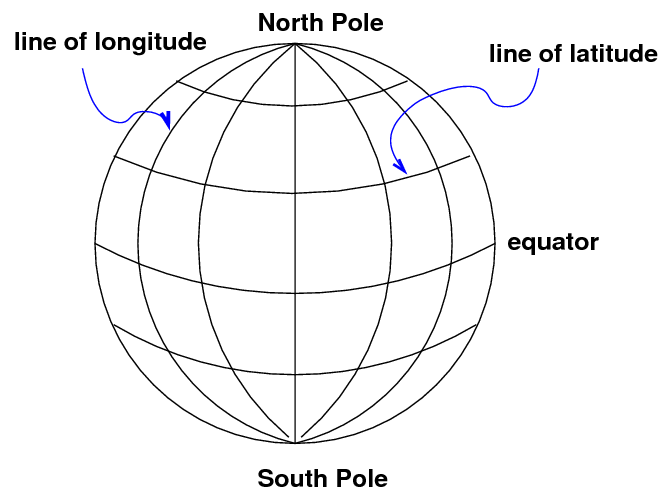
The system is oriented by the spin axis of the Earth, and has special points at the North and South Poles. We use lines of latitude and longitude to demarcate the surface. It's obvious that latitude is measured away from the equator. But where is the starting point for longitude? There is no "obvious" choice. After a lot of dickering, European nations finally decided to use the location of the Greenwich Observatory in England as the starting point for longitude.
There are several ways to specify a location -- for example, that of the RIT Observatory. One can use degrees:
latitude 43.0758 degrees North, longitude 77.6647 degrees West of Greenwich
Or degrees, minutes and seconds:
latitude 43:04:33 North, longitude 77:39:53 West
Or, in the case of longitude, one can measure in time zones. The sun will set at the RIT Observatory about 5 hours and 11 minutes later than it does at Greenwich, so one could say
latitude 43:04:33 North, longitude 05 hours 11 minutes West
The celestial coordinates
On can make a similar coordinate system which is "fixed to the sky":

Once again, we use the Earth's rotation axis to orient the coordinates. There are two special places, the North and South Celestial Poles. As the Earth rotates (to the East), the celestial sphere appears to rotate (to the West). Stars appear to move in circles: small ones near the celestial poles, and large ones close to the celestial equator:
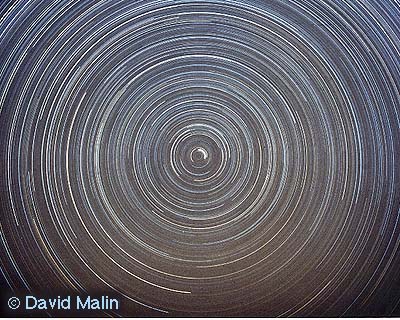
Image copyright
David Malin.
We again use two orthogonal coordinates to describe a position:
- Declination, like a celestial latitude
- Right Ascension, like a celestial longitude
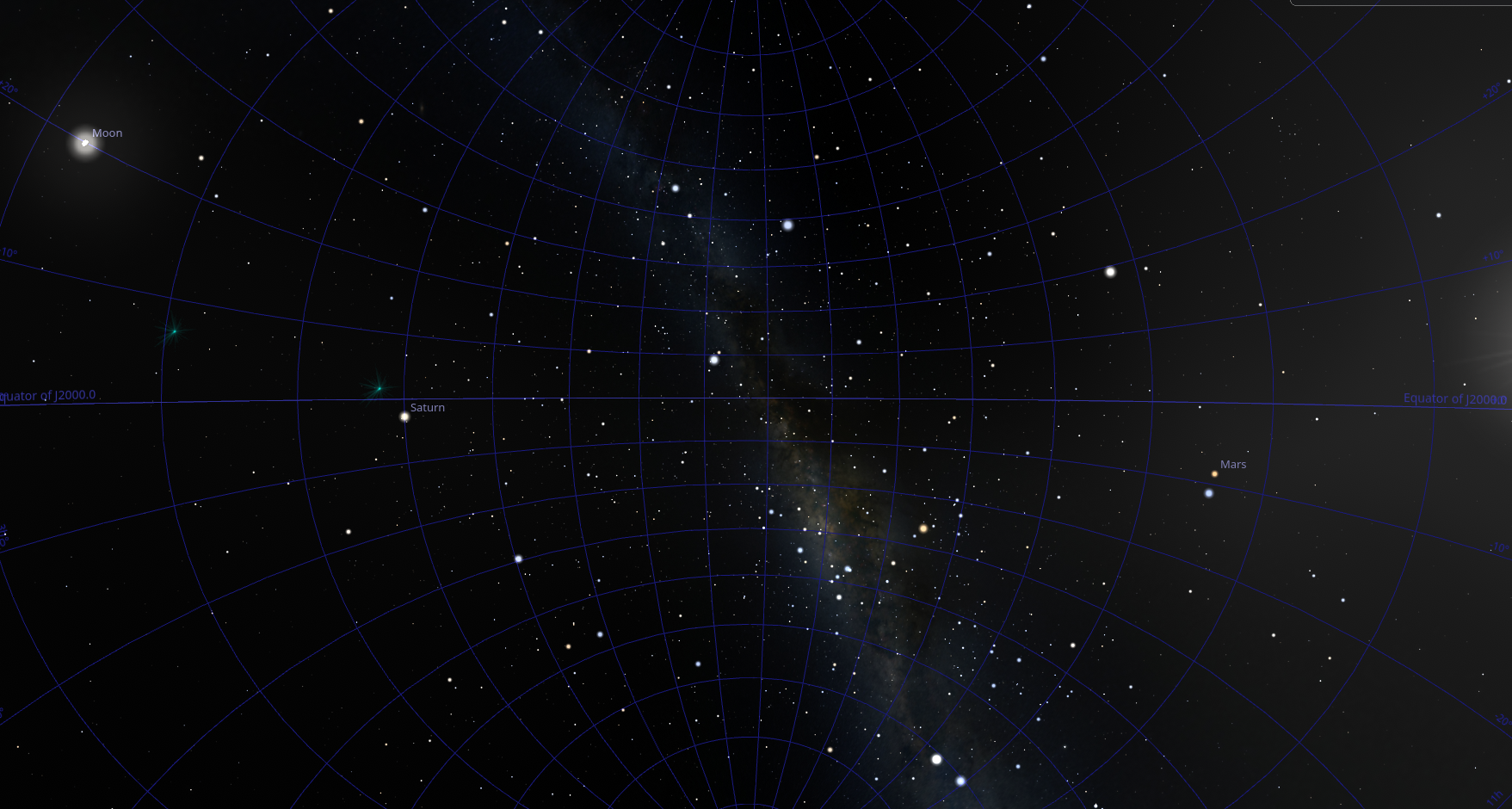
As with latitude, Declination is measured away from the celestial equator. But there is again no obvious choice for the starting point of the other set of coordinates. Where should we start counting Right Ascension? The rather arbitrary choice made by astronomers long ago was to pick the point at which the Sun appears to cross the celestial equator from South to North as it moves through the sky during the course of a year.
In the depths of the winter (for the Northern hemisphere), the Sun lies to the south of the celestial equation,
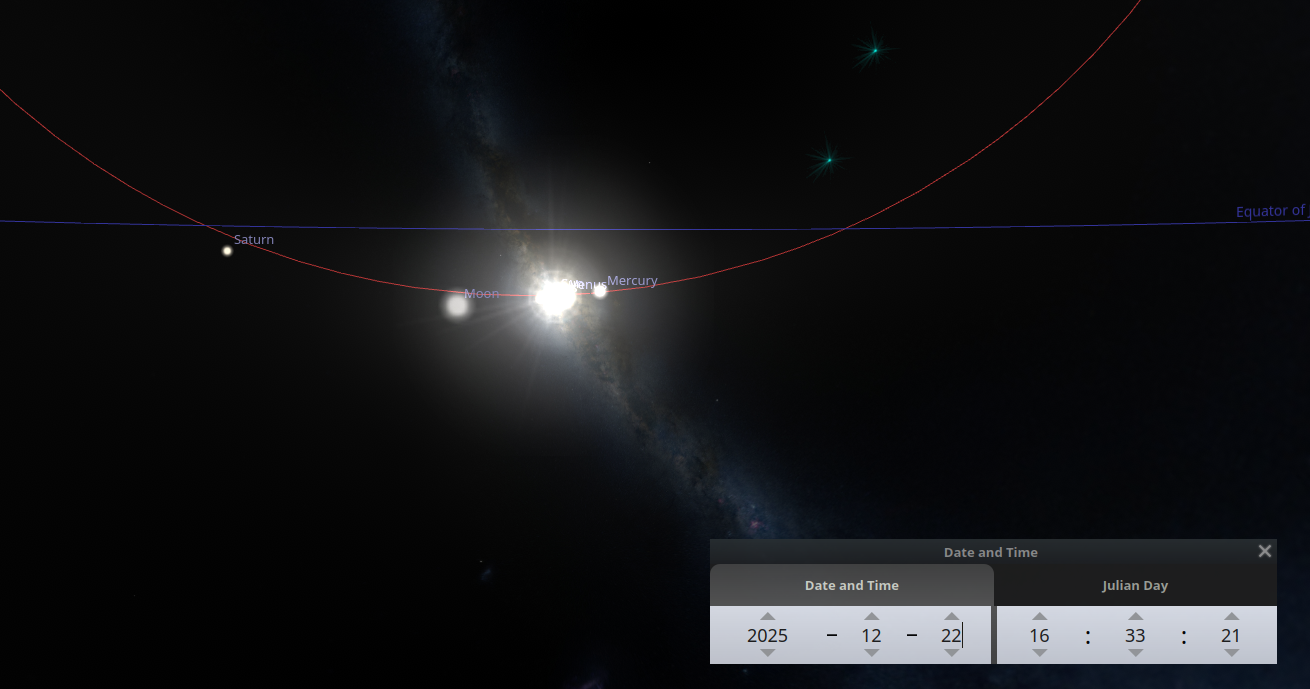
but as spring (for the Northern hemisphere) approaches, the Sun moves to the North.
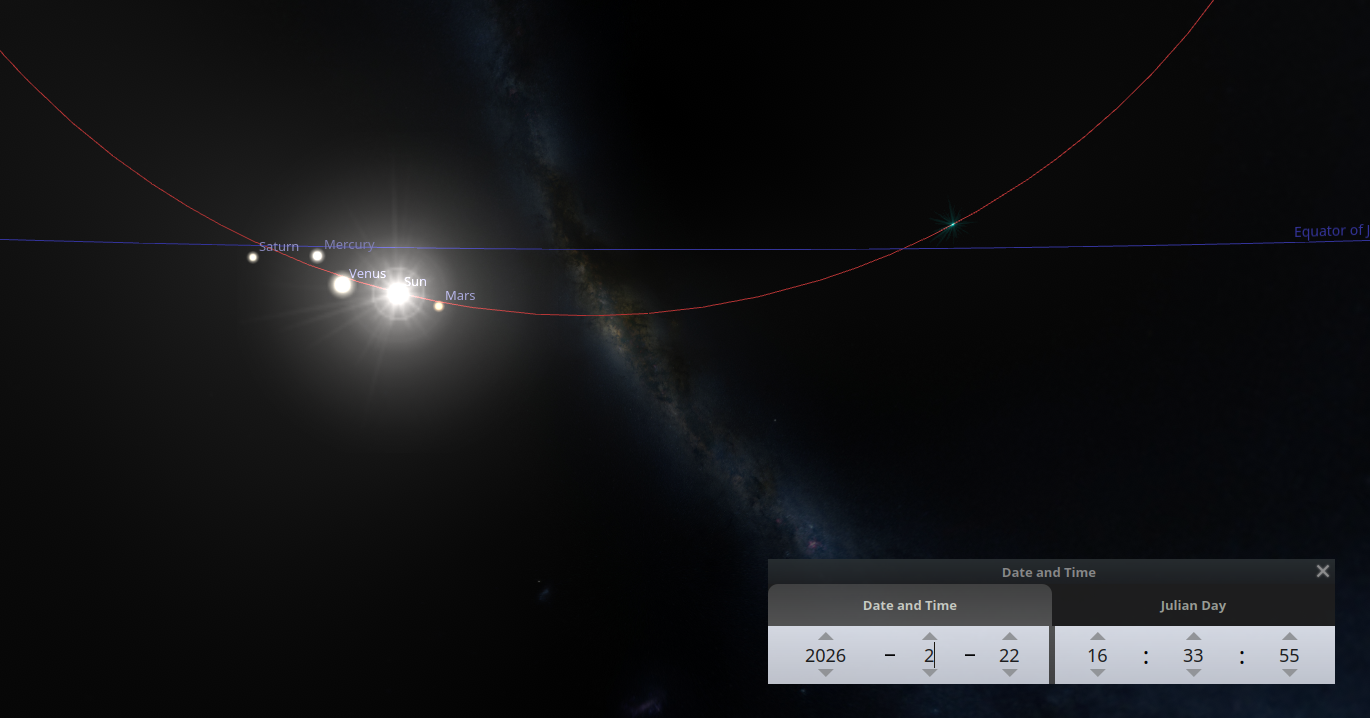
The time when the Sun crosses the celestial equator heading to the North -- typically around March 21 -- is called the vernal equinox.
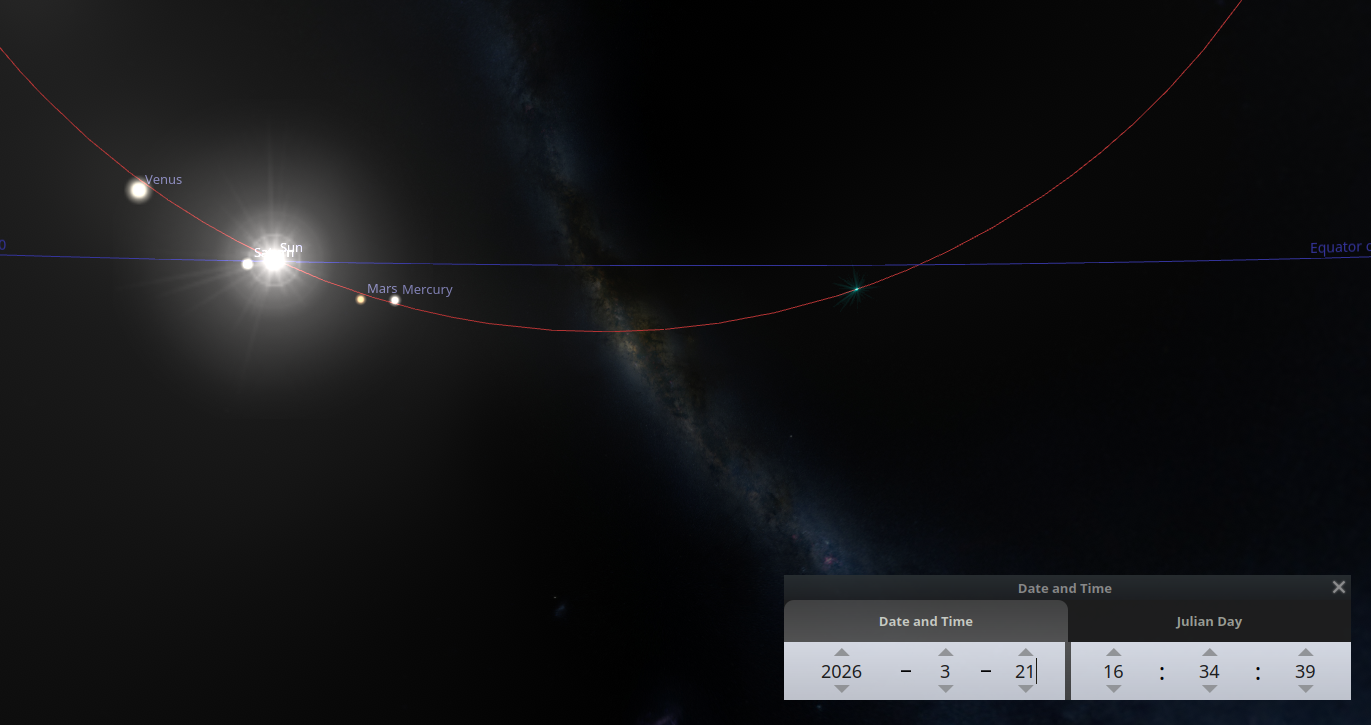
Astronomers choose to place the zero-point of the Right Ascension axis at the position of the Sun at this moment, as it crosses the equator heading North.
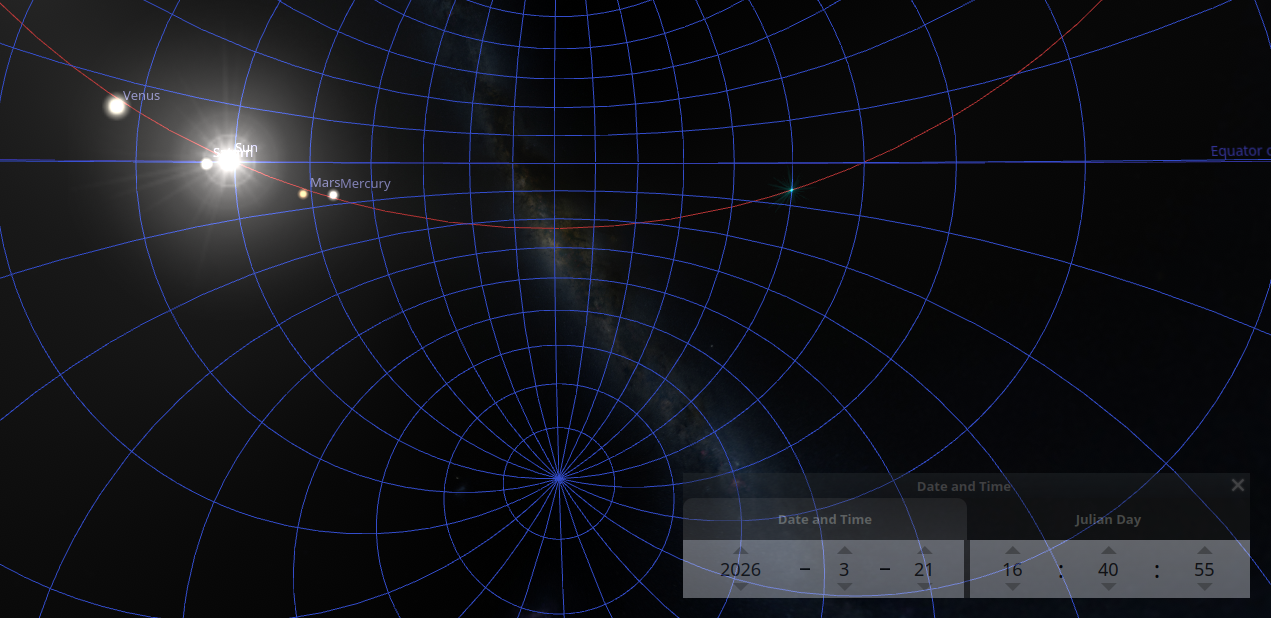
Once again, there are several ways to express a location. The star Sirius, for example, can be described as at
Right Ascension 101.287 degrees, Declination -16.716 degrees
We can also express the Declination in Degrees:ArcMinutes:ArcSeconds, just as we do for latitude; and, as usual, there are 360 degrees around a full circle. For Right Ascension, astronomers always use the convention of Hours:Minutes:Seconds. There are 24 hours of RA around a circle in the sky, because it takes 24 hours for the Sun to move all the way from sunrise to the next sunrise.
Right Ascension 06:45:09, Declination -16:42:58meaning
- the Right Ascension is 6 hours, 45 minutes, 09 seconds
- the Declination is -16 degrees, 42 arcminutes, 58 arcseconds
What's the difference between an "arcminute" and a "minute"?
- one degree is divided into 60 arcminutes
- one arcminutes is divided into 60 arcseconds. Therefore, there are 3600 arcseconds in one degree
- one hour of time is divided into 60 minutes of time
- one minutes of time is divided into 60 seconds of time. Therefore, there are 3600 seconds of time in one hour of time
Exercises
- How many degrees are there all the way around the celestial equator? How many hours are there around the celestial equator?
- How many degrees make up one hour of Right Ascension?
- Can you verify that the two different expressions above for the RA of Sirius are equivalent?
The ecliptic coordinate system is convenient when
dealing with objects in the solar system:
they are concentrated towards the ecliptic equator:
If you zoom in, you can see that the major planets
lie slightly above or below the ecliptic equator,
because their orbits around the Sun are inclined
slightly with respect to the Earth's.
Ecliptic coordinates can also be important when you
want to avoid the solar system.
Telescopes in space, such as the Hubble Space Telescope
or the Chandra X-ray Telescope,
cannot point close to the Sun
(or else they might suffer damage to their detectors).
For some purposes, astronomers want to make very,
very long exposures: days or even weeks long.
During such a long exposure, the Earth may move a
significant fraction of its entire orbit,
which can cause a target originally far from the Sun ....
... to move closer to the Sun, from the telescope's point
of view.
Therefore, astronomers sometimes choose their
very deep fields
The ecliptic and equatorial coordinate systems
are rotated with respect to each other because the Earth's
equator (which define the equatorial system)
is tilted by about 23.5 degrees relative to the
plane of the Earth's orbit (which defines the ecliptic system).
If we could fly far above the plane of the Milky Way, in the
direction of the Northern Galactic Pole, and look back down
on the disk, the coordinates would be laid out like this:
If you go out early this September evening to some
location far from the city lights of Rochester,
you'll see the Milky Way
stretching overhead, with the galactic center
just above the southern horizon.
(Note: brightness of Milky Way has
been greatly enhanced in the picture below)
If you make a map of the sky in galactic coordinates,
the Milky Way runs right across the middle.
The section we see in the summer sky from Rochest is
in mostly the left half of this map.
An infrared map of the sky in galactic coordinates
made by the COBE satellite is dominated by emission
from dust in the Milky Way,
but also shows a faint band of light
due to emission by dust particles in the
solar system.
Note that the plane of the solar system is tilted by a large
angle relative to the plane of the Milky Way.
The plane of the ecliptic is also tilted by a large angle
with respect to the plane of our Galaxy;
by about 63 degrees.
Is this a good idea?
Perhaps you should see where it lies with respect to the
Milky Way, by converting its RA and Dec
to galactic coordinates.
There are several ways to do this --
I recommend one of these tools:
The galaxy in which we live is a relatively large,
but otherwise ordinary,
spiral galaxy.
If we could fly far above it and look down on the
disk,
we might see something like this:
On the other hand,
if we were to fly far away, but in the plane
of the disk,
and take a picture of the Milky Way from the side,
we might see this:
Galaxies are very complicated entities, composed of hundreds of billions
of stars and planets, untold trillions of asteroids and rocks, giant and
not-so-giant clouds of gas and dust, magnetic fields, and a host of
other objects.
In order to simplify our discussion of galaxies,
astronomers often break them down into a few
common pieces.
Today, we'll look very briefly at each component.
Later in the course, we'll examine them more carefully.
Most spiral galaxies feature a central bulge
of roughly spherical shape.
The stars in this bulge are quite different
from the stars in the disk:
bulge stars are
In theories of galaxy formation,
the bulge is one of the first components
in which stars form.
Some galaxies,
like M104,
have very large bulges.
In others, such as NGC 5907,
the bulge is so small that one can barely see it.
The bulge of our Milky Way lies somewhere in the middle.
Humans have a personal connection to the disk
of our galaxy:
our Sun is one of the members of the
disk population.
The disk is a large, flat collection
of gas and dust,
sprinkled with stars which
If we look at relatively short wavelengths --
in the optical,
or near-infrared --
we see a flat collection of billions of stars.
But if we look at longer infrared wavelengths,
or in the radio regime,
we see the clouds of gas and dust that permeate this
portion of the Milky Way.
How do we know that the disk of our own Milky Way contains
spiral arms?
We can see them clearly when we view other galaxies
from far away,
but our Sun lies in the middle of the disk.
Is there any clear evidence for spiral structure?
Since the clouds of gas and dust lying in the disk block
our view of distant portions of the galaxy in the optical,
astronomers have used radio waves --
which can penetrate the clouds --
to examine the far regions of the Milky Way.
We can use radio observations to identify discrete structures
which should act as
tracers
of the spiral arms.
Look at the maps of these tracers
in the figures below,
taken from
The Sun is located at (X = 0, Y = 8.5),
and the center of the Milky Way at
(X = 0, Y = 0).
Can you see evidence for spiral structure?
First, look at the position of HII regions.
One model suggests that arms lie here:
Will a pattern emerge more clearly if we include
not only HII regions, but also GMCs and masers?
It probably says a lot that we can't decide
just how many arms the Milky Way contains!
In the last few years,
Gaia has measured the properties of over a billion
stars in the Milky Way.
Using this gigantic dataset,
and selecting stars of particular types,
we can start to see the spiral arms
directly as clumps of stars (or the voids between them).
Click on the image below to watch an animation
which shows off Gaia's detection
of the spiral arms in the solar neighborhood.
Using the Gaia database to select the most massive,
and certainly very young,
O and B stars,
we can map out spiral arms in the vicinity of the Sun.
It does appear that we are located
between two spiral arms,
and more than 100 pc from the nearest
substantial HII region.
Ecliptic (Solar System) coordinates
For objects within our solar system --
planets, asteroids, comets --
it often helps to use a coordinate system
centered on the Sun, with its equator running along
the plane of the planetary orbits.
We call this the ecliptic coordinate system.
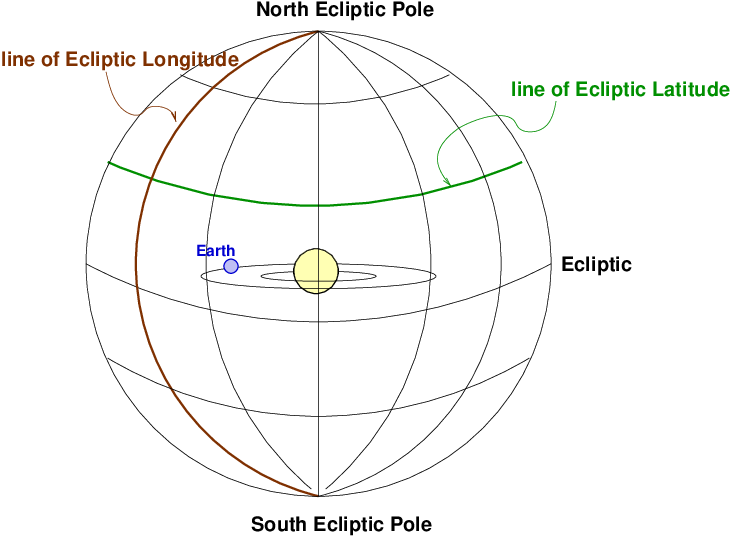
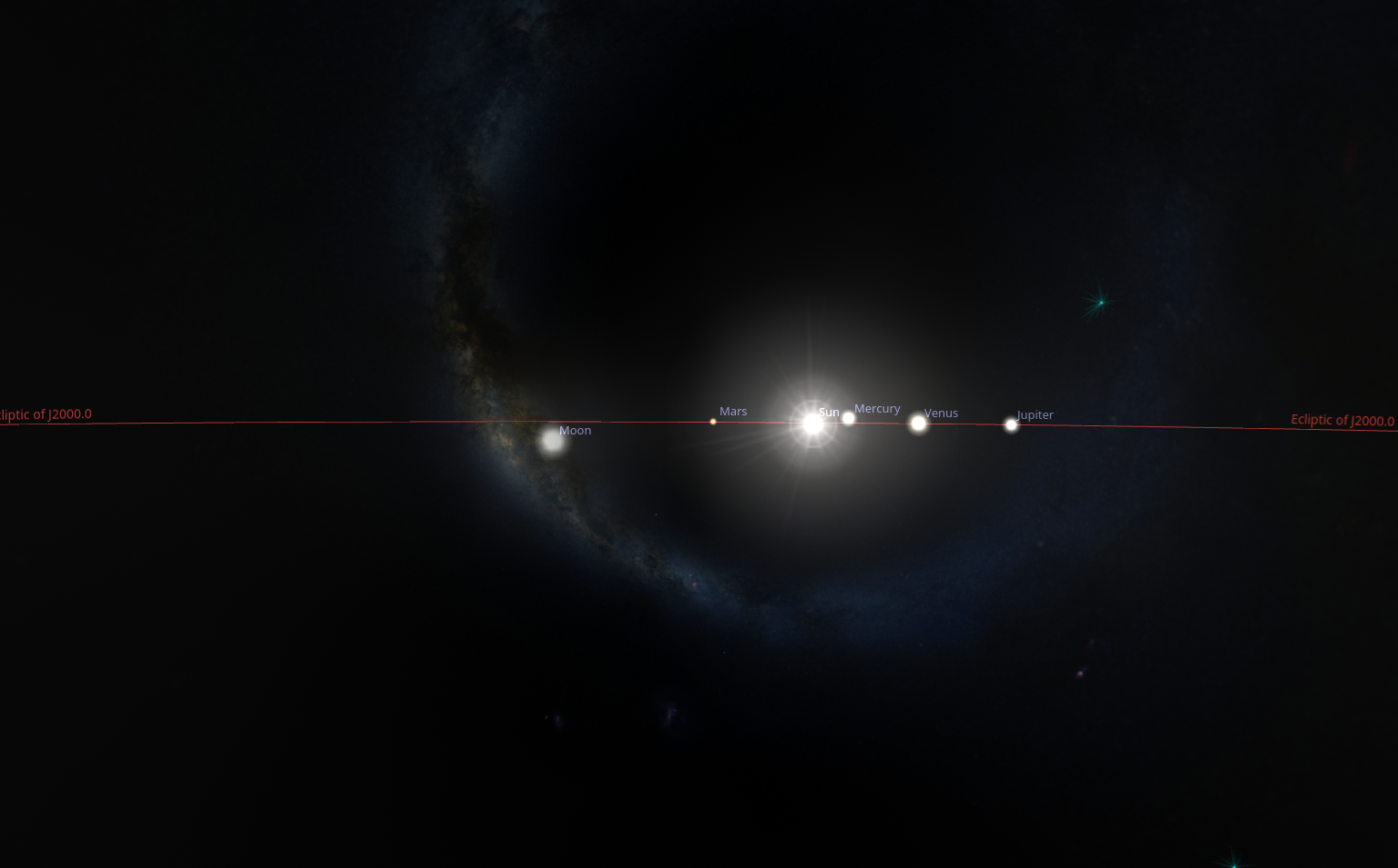

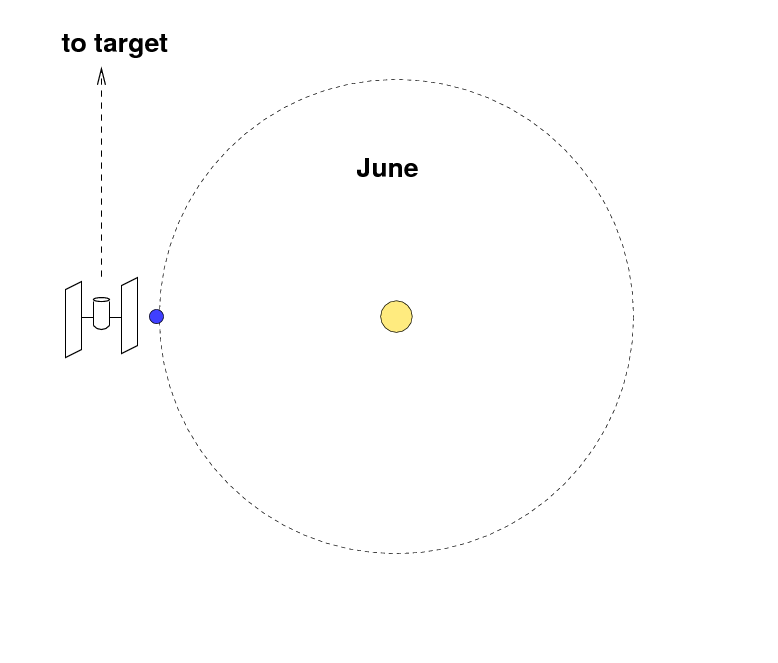
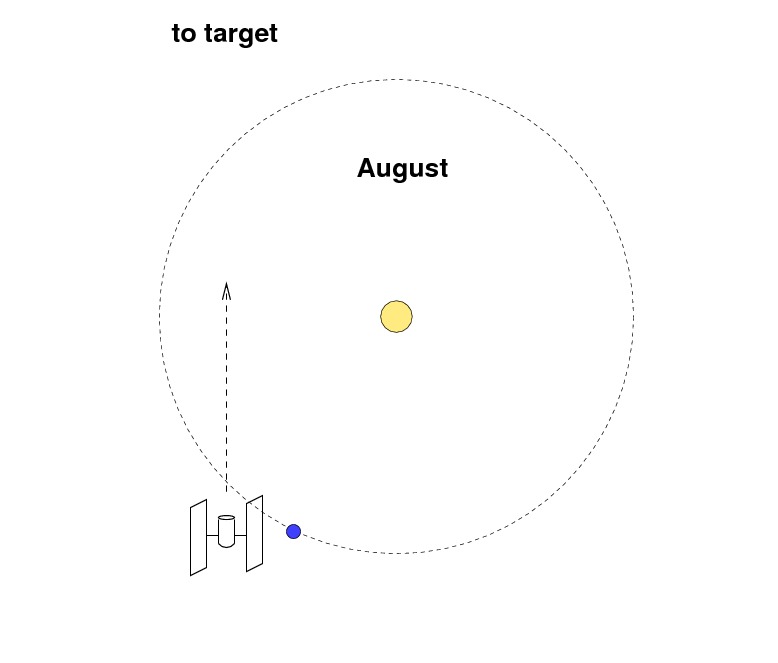
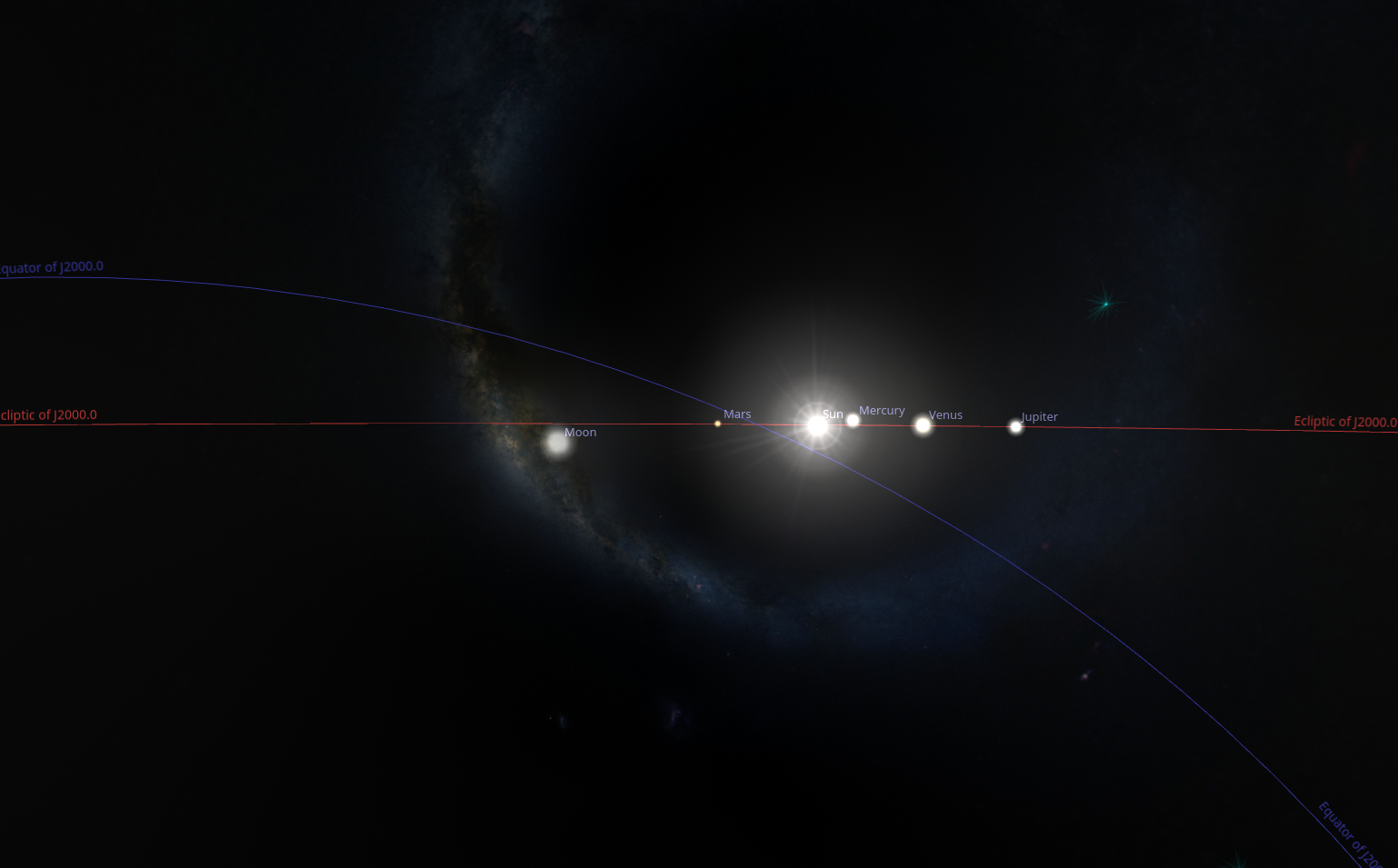
Galactic Coordinates
One more set of coordinates comes into play
if one studies the distribution of stars
within our Milky Way Galaxy,
or the distribution of other galaxies
in the far reaches of space.
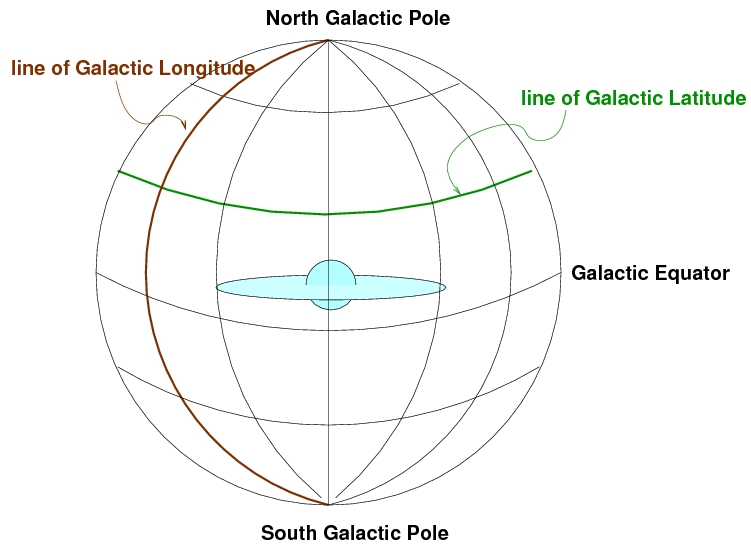

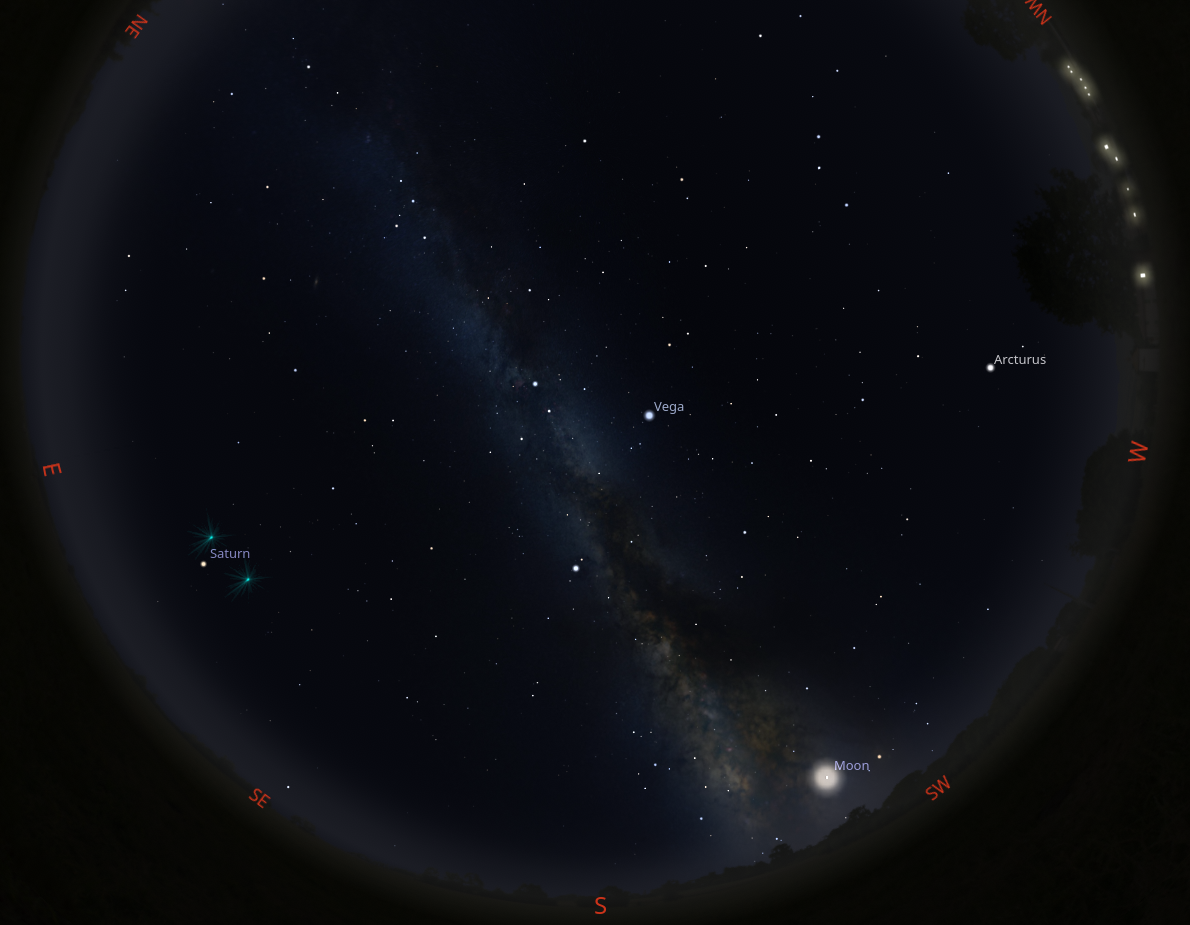
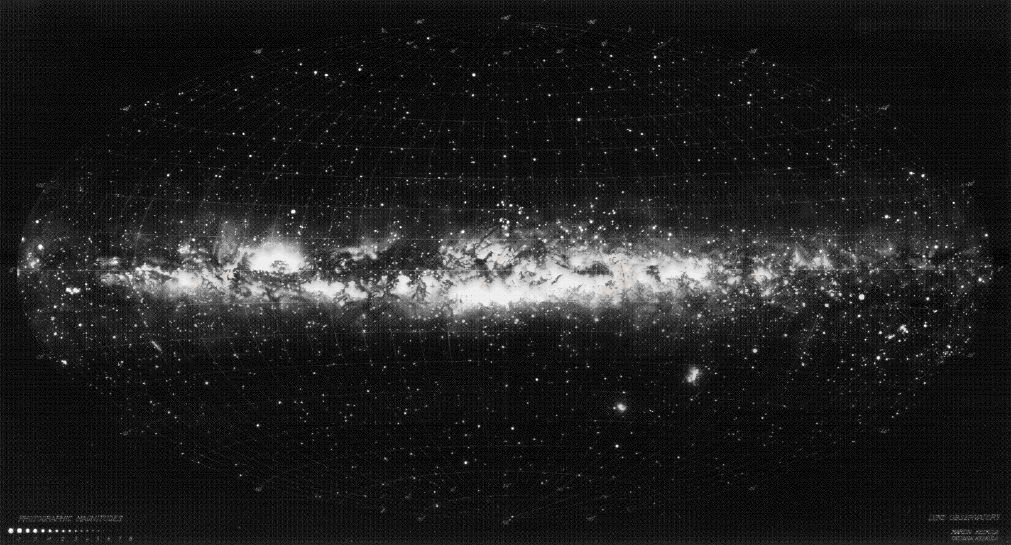
Map courtesy of the
Lund Observatory
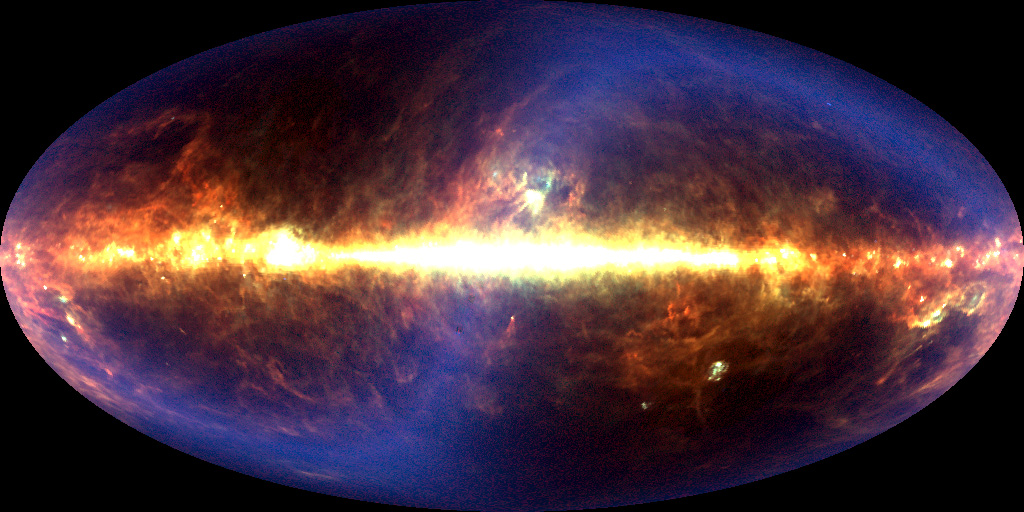
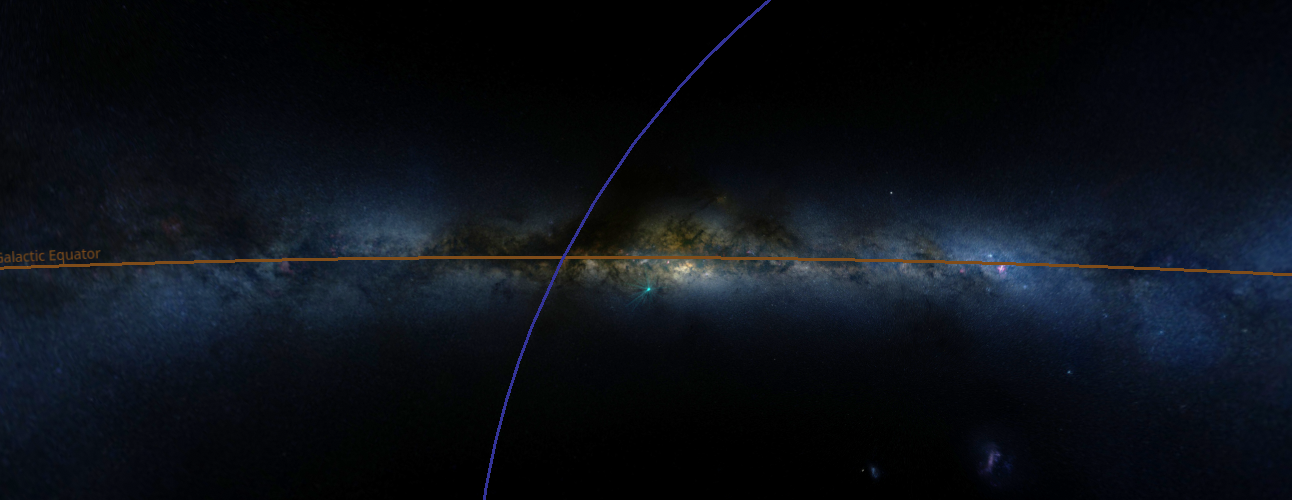
Converting between coordinates
Suppose that you know the coordinates of an object
in one system, but you need to know its
coordinates in a different system.
For example, someone tells you that you should
consider using HST to study a quasar located at
RA = 18:14:15 Dec = -29:03:39
Overview: the components of the Milky Way

Image of M101 courtesy of
Hubble Image: NASA, ESA, K. Kuntz (JHU), F. Bresolin (University of Hawaii), J. Trauger (Jet Propulsion Lab), J. Mould (NOAO), Y.-H. Chu (University of Illinois, Urbana) and STScI; CFHT Image: Canada-France-Hawaii Telescope/J.-C. Cuillandre/Coelum; NOAO Image: G. Jacoby, B. Bohannan, M. Hanna/NOAO/AURA/NSF
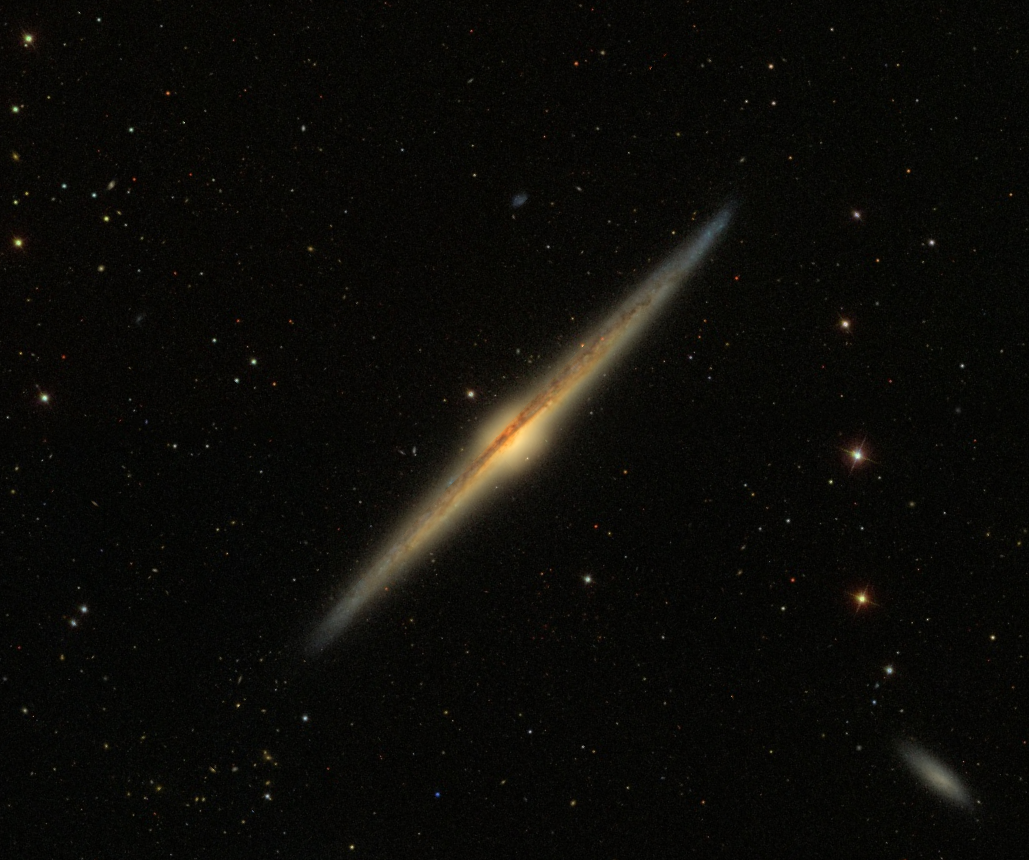
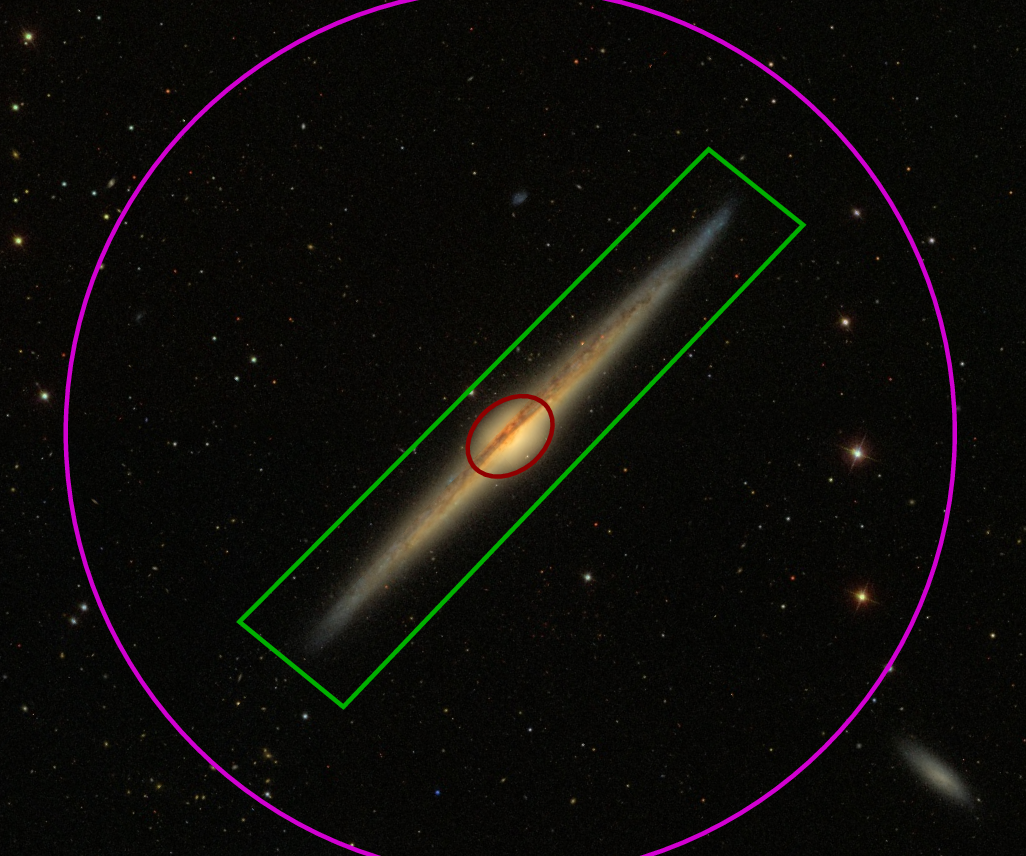
The bulge
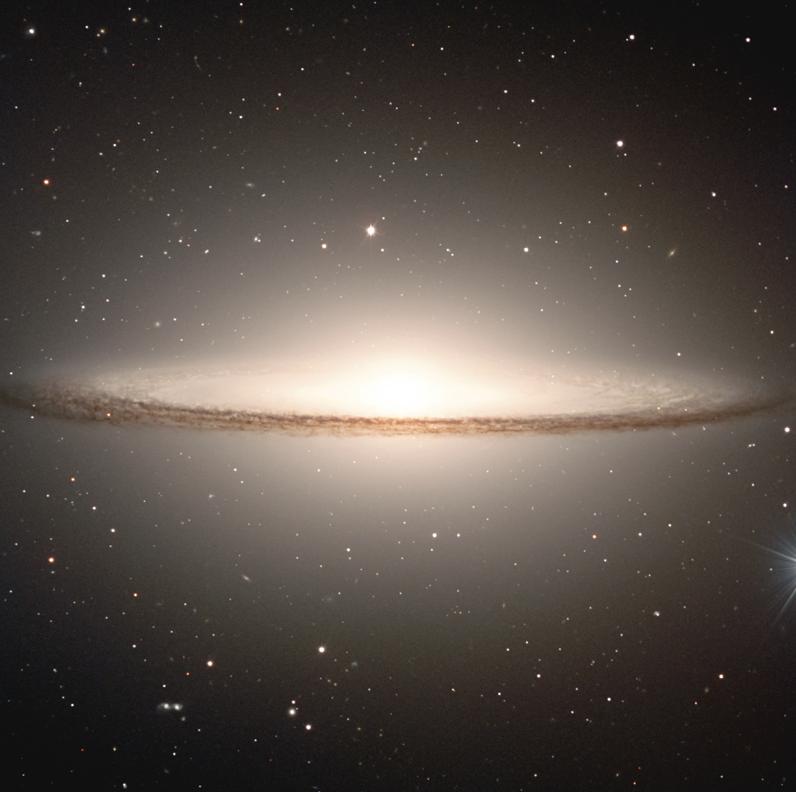
Image courtesy of
ESO/P. Barthel
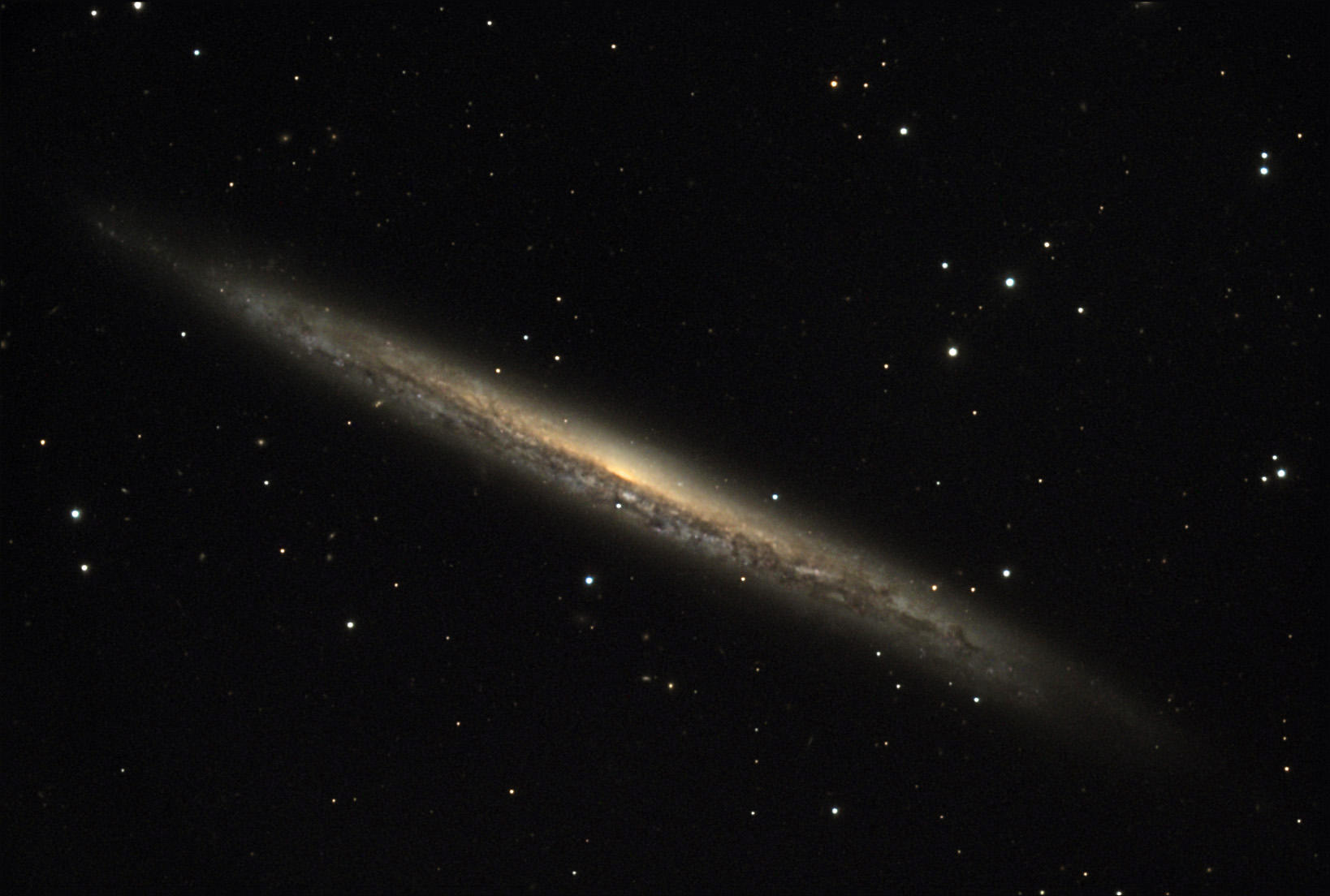
Image courtesy of
Brad Ehrhorn/Adam Block/NOAO/AURA/NSF

Image courtesy of
Axel Mellinger and Astronomy Picture of the Day for 2001 Feb 2
The disk

WISE image courtesy of
NASA/JPL-Caltech

WISE image courtesy of
NASA/JPL-Caltech/UCLA
Spiral arms in the disk
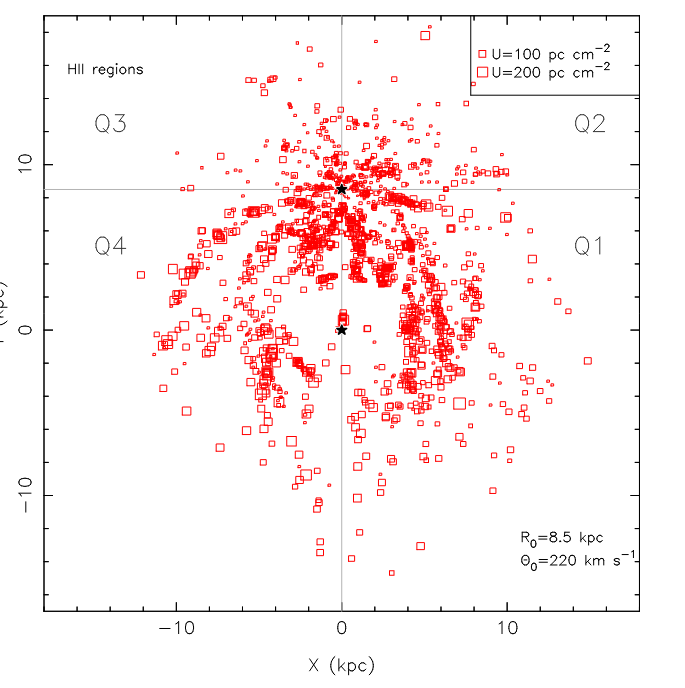
Image taken from Figure 5 of
Hou, L. G., and Han, J. L., A&A 569, A125 (2014)
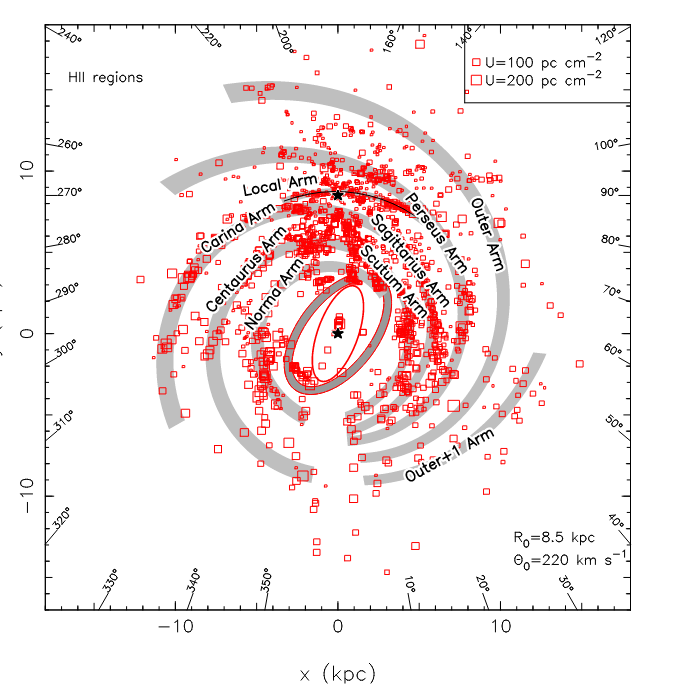
Image taken from Figure 5 of
Hou, L. G., and Han, J. L., A&A 569, A125 (2014)
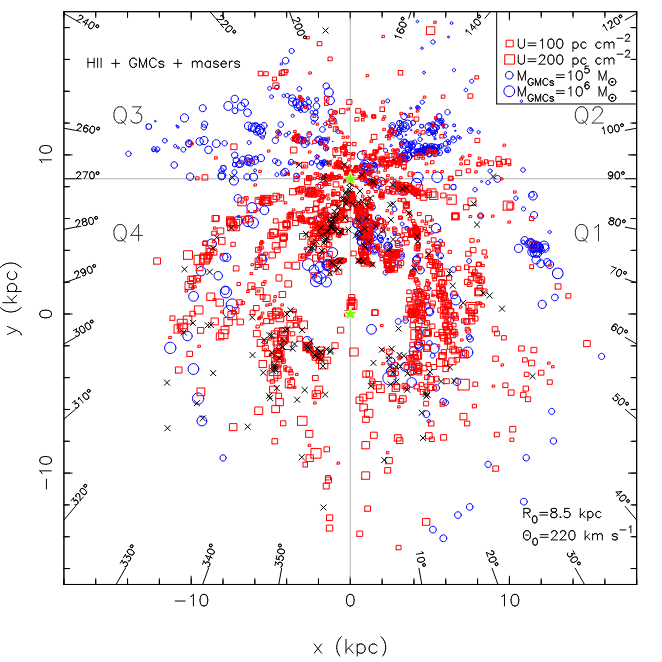
Image taken from Figure 7 of
Hou, L. G., and Han, J. L., A&A 569, A125 (2014)
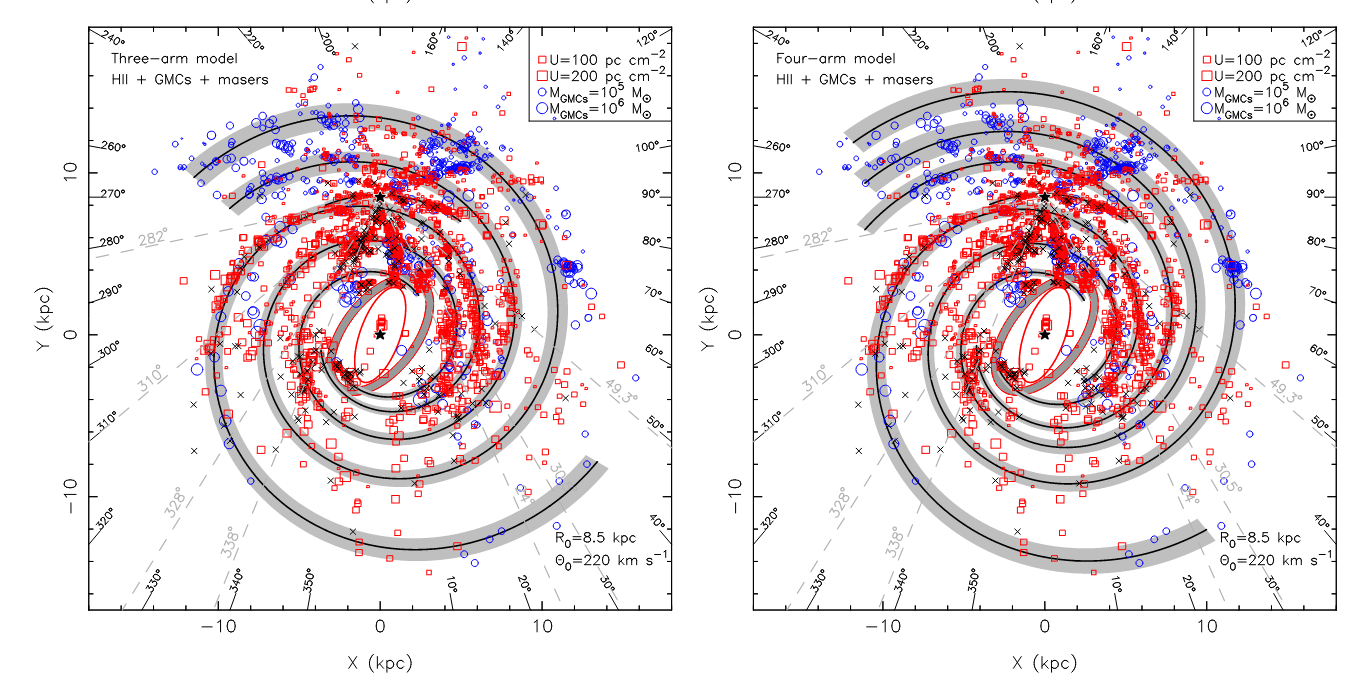
Image taken from Figure 10 of
Hou, L. G., and Han, J. L., A&A 569, A125 (2014)

Image and movie courtesy of
ESA/Gaia/DPAC
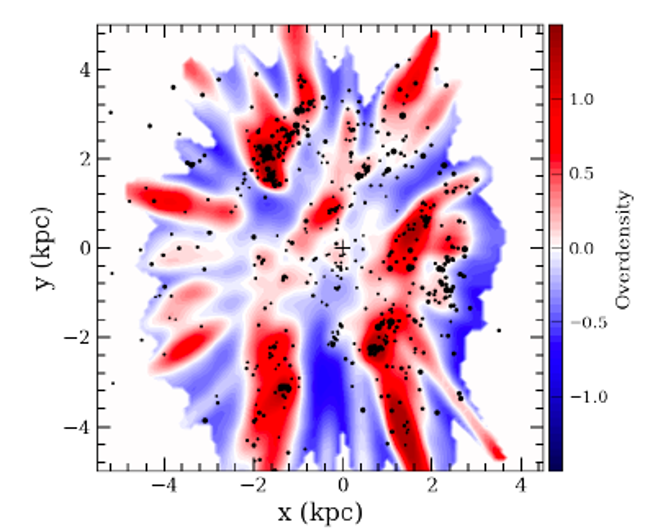
Image courtesy of
Gaia Collaboration, Drimmel et al., arXiv:2206.06207 (2022)
Q: Does the Sun, marked by the cross at (0, 0) in the graph above,
lie inside an arm, or in the space between two arms?

Image courtesy of
Kevin Jardine,
based on data from the paper
"Gaia Data Release 3: Mapping the asymmetric disc of the Milky Way" by the Gaia Collaboration, Drimmel, R., et al. 2022.
For more information
 Copyright © Michael Richmond.
This work is licensed under a Creative Commons License.
Copyright © Michael Richmond.
This work is licensed under a Creative Commons License.